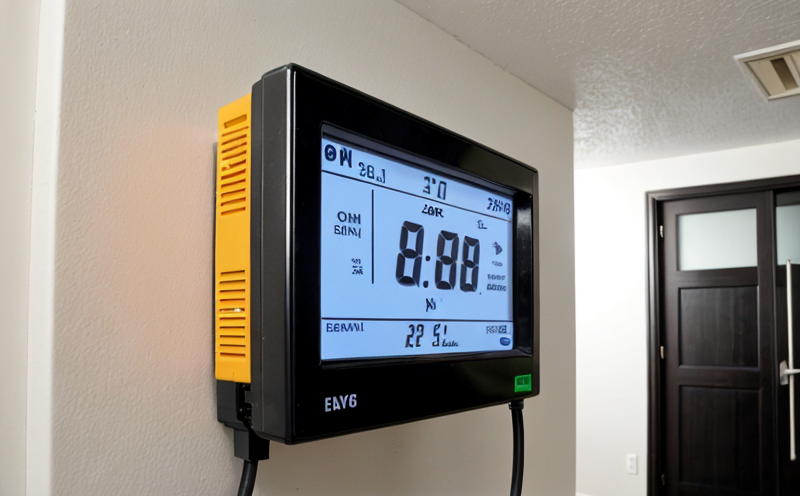ASTM D8233 HVAC System Efficiency Testing
The ASTM D8233 HVAC (Heating, Ventilation and Air Conditioning) System Efficiency Test is a critical tool used in the energy sector to ensure that HVAC systems are operating as efficiently as possible. This test evaluates the overall performance of an HVAC system by measuring its input power, output capacity, and efficiency at different operating conditions.
Efficiency testing is not just important for ensuring compliance with industry standards but also plays a pivotal role in reducing energy consumption and operational costs. By identifying inefficiencies early on, businesses can take corrective actions to improve performance, which ultimately contributes to sustainability goals and reduces environmental impact.
The ASTM D8233 test method specifies procedures for determining the efficiency of HVAC systems using a combination of static and dynamic testing methods. It provides guidelines on how to set up the test environment, select appropriate equipment, and interpret results accurately. The test involves measuring the input power and output capacity under various conditions such as cooling mode, heating mode, and fan-only operation.
One key aspect of this test is understanding the impact of different operating parameters like outdoor air temperature, indoor setpoint temperatures, and relative humidity levels on system performance. By simulating real-world scenarios during testing, we can ensure that the measured efficiencies reflect actual field conditions, providing more reliable data for decision-making.
Another important consideration in ASTM D8233 testing is proper specimen preparation. This includes ensuring that all components of the HVAC system are clean and free from obstructions before starting any measurements. Additionally, it’s crucial to calibrate all instruments used accurately to avoid errors in data collection.
The results obtained from this test provide valuable insights into how efficiently an HVAC system is converting electrical energy into useful cooling or heating. These metrics help stakeholders make informed decisions about whether modifications are needed to enhance performance or if the current setup meets expected standards.
- Identifies opportunities for energy savings through improved efficiency
- Helps identify underperforming parts that may need replacement
- Ensures compliance with relevant international standards such as ISO 5152 and ASHRAE 90.1
- Promotes sustainable practices by minimizing unnecessary energy consumption
Why It Matters
The importance of ASTM D8233 testing cannot be overstated, especially given today’s increasing focus on reducing carbon footprints and enhancing sustainability efforts. Properly maintained HVAC systems play a significant role in maintaining comfortable indoor environments while minimizing energy usage.
For organizations looking to optimize their operations or improve product offerings related to HVAC technology, this test serves as an essential benchmark against which performance can be measured consistently over time. It allows companies to track progress towards their sustainability targets and ensure that they meet regulatory requirements regarding energy efficiency.
The data provided by ASTM D8233 testing also enables manufacturers to design products that are not only efficient but also reliable, durable, and cost-effective. By incorporating these tests into product development processes early on, companies can reduce costs associated with post-sale warranty claims due to poor performance or premature failures.
Ultimately, the implementation of ASTM D8233 testing promotes better decision-making across various stages of project lifecycle management—from initial design phases through commissioning and maintenance periods. This leads to more informed choices regarding equipment selection, installation practices, and ongoing operational strategies aimed at achieving optimal energy efficiency levels.
Why Choose This Test
Selecting ASTM D8233 HVAC System Efficiency Testing offers several advantages over other testing methodologies available in the market. Here are some reasons why choosing this particular test could be beneficial:
- Achieves Compliance with International Standards: Using ASTM D8233 ensures that your organization complies with internationally recognized standards, which is crucial for both domestic and international markets.
- Promotes Energy Efficiency: By identifying areas where energy losses occur within the system, this test helps businesses reduce their carbon footprint and lower operational costs significantly.
- Enhances Reliability: Regular testing using ASTM D8233 can detect potential issues early on, allowing for preventative maintenance measures to be taken proactively rather than reactively after a failure occurs.
- Better Decision Making: The detailed reports generated by this test provide valuable information that can influence strategic decisions regarding future investments in HVAC infrastructure or upgrades.





